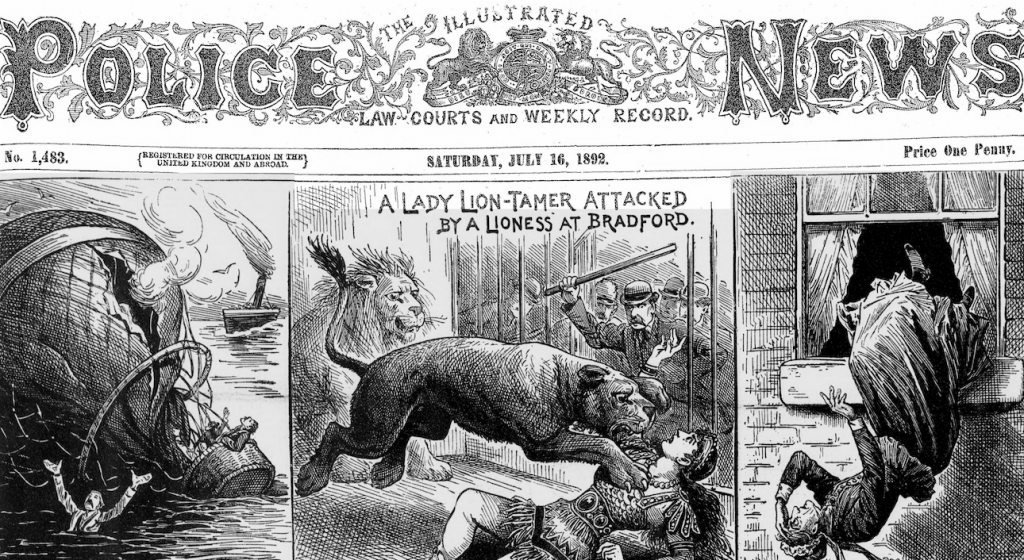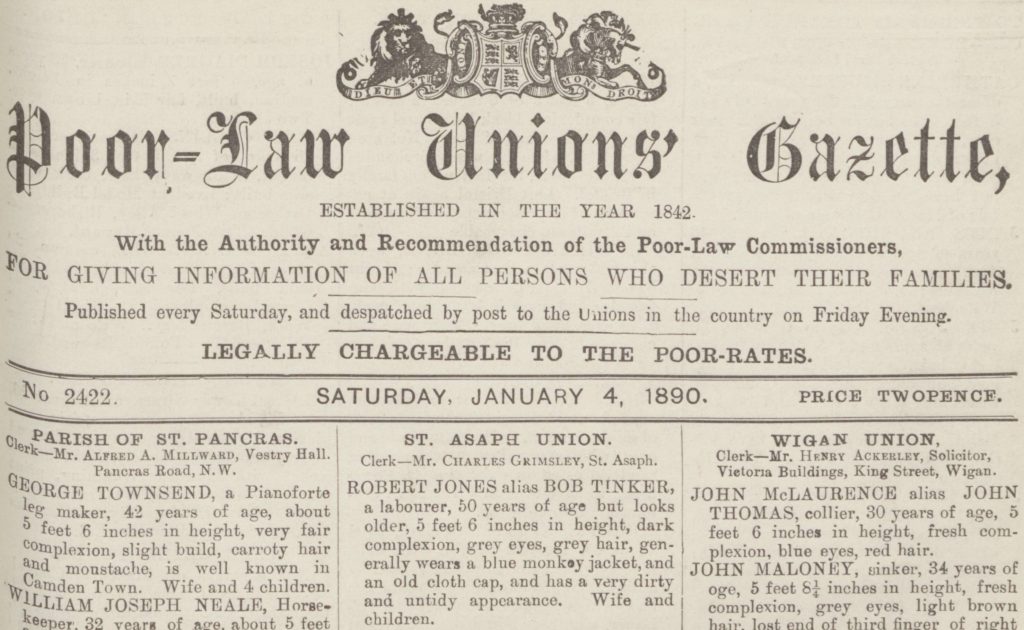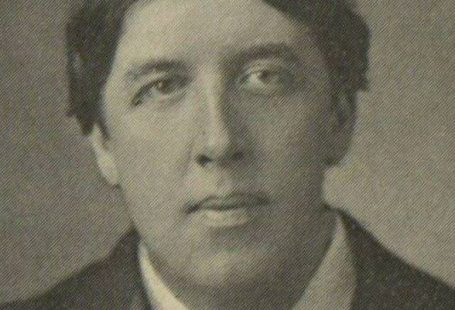Crime stories have filled newspapers since the seventeenth century. From sensational murders to notices seeking the return of stolen property, you will find stories relating to crime in all of our newspapers.
While crime-related news can be found in almost every title, we do hold several newspapers dedicated to crime and punishment.
Title | Years |
| Cleave’s Weekly Police Gazette | 1835, 1836 |
| County Courts Chronicle | 1847-1870, 1885-1896 |
| Illustrated Police Budget | 1899 |
| Illustrated Police News | 1867-1938 |
| Lloyd’s Companion to the Penny Sunday Times and Peoples’ Police Gazette | 1841-1847 |
| People’s Hue and Cry or Weekly Police Register | 1834 |
| People’s Weekly Police Gazette | 1835, 1836 |
| Police Gazette | 1773-1776, 1829, 1858, 1880, 1898, 1916-1918 |
| Poor Law Unions’ Gazette | 1857-1865, 1868-1903 |

The Illustrated Police News, founded in 1864, was the first, and longest-lasting, Saturday penny newspaper that combined two hugely popular Victorian genres: the police newspaper and the illustrated journal. Its founder, George Purkess, was a London publisher who already specialised in the publication of cheap ‘true stories’ of crime, accidents, and domestic disaster. The subject matter of his newspaper was very similar. It collated sensational or unusual stories, often drawn from the London Police Courts, but also reported mishaps from elsewhere in Britain and the world. While repeatedly emphasising the ‘true’ nature of the stories, it was their entertainment and curiosity value that was crucial to the success of the paper. This was underscored by the paper’s front pages, which consisted largely of artists’ impressions of these events combined with attention-grabbing headlines.

Founded in 1856 and running until 1903, Poor Law Unions’ Gazette is particularly useful to family historians as it published information on paupers from all over the country who deserted their wives and families, leaving them chargeable to the Poor Law Unions. Since the authorities did not wish to be saddled with the responsibility for providing for such families, they issued descriptions of the deserters to facilitate their apprehension, some of which are very detailed and colourful. Information on the person’s last known employment and whereabouts can also be included.
Register today and explore crime and punishment throughout the ages






27 comments On Crime, Court and Police Newspapers
Thanks a lot for the post.Really thank you! Much obliged.
I Am So Happy To Read This. This Is The Kind Of Manual That Needs To Be Given And Not The Random Misinformation That’s At The Other Blogs.
ISSA Case Study Help
I was the first destination and was chosen to be born on this earth.
super smash flash 2
Let this life come and go the natural way it wants. I have no reason to lament about this life because
bloons tower defense 5
Last night I was in the search of one of the best ways to fix error facing while laptop plugged in but not charging suddenly my friend asked me to try out this portal for once. Really it was really helpful for me to have all beneficial information.
This Site And The Resources You Provide Is Really Nice Keep It Up.
I see one predominant fault in publishing arrests. Police corporations generally tend to have sturdy methods for publishing facts. Courts, no longer as tons. So regularly, you would possibly see Joe Blow’s arrest published, but you might not see that the costs were dropped, or he becomes convicted, or something. plenty of editors struggle with this trouble.
Hey Admin,
I was going through your article and I must say you have a very great writing skills.
The way you have elaborated every point is just amazing.
Also I guess you have done a good amount of research on this topic.
Btw I am also a writer and has written an article.
Can you please give your valuable feedbacks on my article?
Here is the link –> Best Anti Adware Tool.
Kudos.
I like viewing web sites which comprehend the price of delivering the excellent useful resource free of charge. I truly adored reading your posting. Thank you!
This is exactly what I was looking for. Thanks for sharing this great article! That is very interesting Smile I love reading and I am always searching for informative information like this!
We are really grateful for your blog post. You will find a lot of approaches after visiting your post.
I did enjoyed reading it, I will be sure to bookmark your blog and definitely will come back from again..
wow, great, I was wondering how to cure acne naturally. and found your site by google, learned a lot, now i’m a bit clear. I’ve bookmark your site and also add rss. keep us updated.
A very nice and good post this. I really like it very much. Keep this quality of your work on articles going on and please do not let the quality of your articles fall to bad. Cheers!
That’s what makes you the best. You should keep publishing more articles and you will Such Become One of the best writers ever
I also benefit from learning the assessments, but learn that alot of people ought to stay on essay to try and add worth in the direction of the authentic weblog release.
I’m happy I located this blog! From time to time, students want to cognitive the keys of productive literary essays composing. Your first-class knowledge about this good post can become a proper basis for such people.
Your good knowledge and kindness in playing with all the pieces was very useful. I don’t know what I would have done if I had not encountered such a step like this
Great info! I recently came across your blog and have been reading along. I thought I would leave my first comment. I don’t know what to say except that I have.
That’s what makes you the best. You should keep publishing more articles and you will Such Become One of the best writers ever
Amazing website to peruse and share,each and each line in your blog is special and mind blowing exceptionally hard to compose such sort of article on the grounds that so much data is accessible on web and to discover great one among them is a troublesome undertaking.
I invest hours on web and after an excessive amount of diligent work I arranged a blog which will shaken you mind on the off chance that you read it.
Incredible posting this is from you. I am really and truly thrilled to read this marvelous post. You’ve really impressed me today. I hope you’ll continue to do so!
Mmm.. good to be here in your article or post, whatever, I think I should also work hard for my own website like I see some good and updated working in your site.
I was very impressed by this post, this site has always been pleasant news Thank you very much for such an interesting post, and I meet them more often then I visited this site.
Excellent read, Positive site, where did u come up with the information on this posting?I have read a few of the articles on your website now, and I really like your style. Thanks a million and please keep up the effective work.
A very nice and good post this. I really like it very much. Keep this quality of your work on articles going on and please do not let the quality of your articles fall to bad. Cheers!
Great info! I recently came across your blog and have been reading along. I thought I would leave my first comment. I don’t know what to say except that I have.